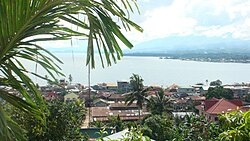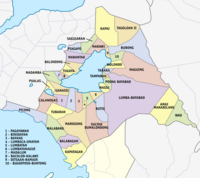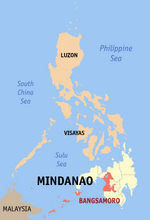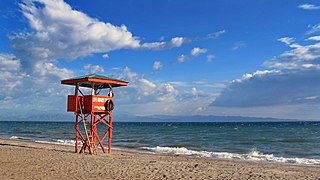
Soccsksargen, formerly known as Central Mindanao, is an administrative region of the Philippines, designated as Region XII. Located in south-central Mindanao, its name is an acronym that stands for the region's four provinces and one highly urbanized city. The regional center is in Koronadal, located in the province of South Cotabato, and the center of commerce and industry is General Santos, which is the most populous city in the region.

Marawi, officially the Islamic City of Marawi, is a 4th class component city and capital of the province of Lanao del Sur, Philippines. According to the 2020 census, it has a population of 207,010 people.

The Maranao people, also spelled Meranao, Maranaw, and Mëranaw, is a predominantly Muslim Filipino ethnic group native to the region around Lanao Lake in the island of Mindanao. They are known for their artwork, weaving, wood, plastic and metal crafts and epic literature, the Darangen. They are ethnically and culturally closely related to the Iranun, and Maguindanaon, all three groups being denoted as speaking Danao languages and giving name to the island of Mindanao. They are grouped with other Moro people due to their shared religion.

Tugaya, officially the Municipality of Tugaya, is a 5th class municipality in the province of Lanao del Sur, Philippines. According to the 2020 census, it has a population of 24,778 people.

Ganassi, officially the Municipality of Ganassi, is a 4th class municipality in the province of Lanao del Sur, Philippines. According to the 2020 census, it has a population of 30,802 people.

Binidayan, officially the Municipality of Binidayan, is a 4th class municipality in the province of Lanao del Sur, Philippines. According to the 2020 census, it has a population of 25,965 people.

Buadiposo-Buntong, officially the Municipality of Buadiposo-Buntong, is a 4th class municipality in the province of Lanao del Sur, Philippines. According to the 2020 census, it has a population of 18,046 people.

Madalum, officially the Municipality of Madalum, is a 3rd class municipality in the province of Lanao del Sur, Philippines. According to the 2020 census, it has a population of 26,478 people.

Malabang, officially the Municipality of Malabang, is a 3rd class municipality in the province of Lanao del Sur, Philippines. According to the 2020 census, it has a population of 49,088 people. The town is one of the two former capitals of the Sultanate of Maguindanao from 1515 until the Spanish conquered the land in 1888.

Marantao, officially the Municipality of Marantao, is a 2nd class municipality in the province of Lanao del Sur, Philippines. According to the 2020 census, it has a population of 37,763 people.

Masiu, officially the Municipality of Masiu, is a 5th class municipality in the province of Lanao del Sur, Philippines. According to the 2020 census, it has a population of 33,580 people.

Mulondo, officially the Municipality of Mulondo, is a 3rd class municipality in the province of Lanao del Sur, Philippines. According to the 2020 census, it has a population of 19,932 people.

Saguiaran, officially the Municipality of Saguiaran, is a 4th class municipality in the province of Lanao del Sur, Philippines. According to the 2020 census, it has a population of 26,712 people.

Picong, officially the Municipality of Picong, is a 4th class municipality in the province of Lanao del Sur, Philippines. According to the 2020 census, it has a population of 18,907 people.
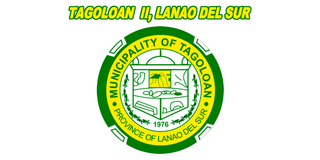
Tagoloan, officially the Municipality of Tagoloan and also known as Tagoloan II, is a 4th class municipality in the province of Lanao del Sur, Philippines. According to the 2020 census, it has a population of 12,602 people. It is the poorest municipality in the whole country of the Philippines.

Tamparan, officially the Municipality of Tamparan, is a 5th class municipality in the province of Lanao del Sur, Philippines. According to the 2020 census, it has a population of 32,074 people.

Datu Mamintal "Bombit" Alonto Adiong Jr. is a Filipino politician who currently serve as the governor of the province of Lanao del Sur from 2007 to 2016, and from 2019 up to present.

Ansaruddin Abdul Malik Alonto Adiong is a Filipino politician serving as mayor of Ditsaan-Ramain, Lanao del Sur since 2022. Previously, he was the representative of Lanao del Sur's 1st district (2013–2022). He was elected vice governor of the Autonomous Region in Muslim Mindanao (ARMM) in 2005. After Governor Zaldy Ampatuan's removal from office in 2009, Adiong became the acting governor until 2011.
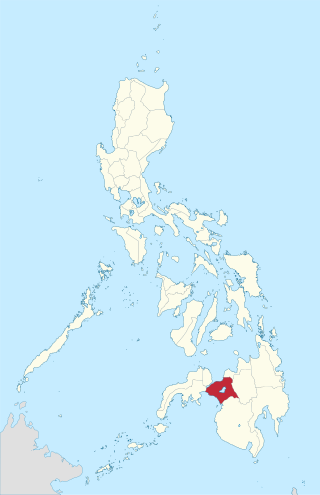
Lanao was a province of the Philippines from 1914 to 1959. Today, the province comprises Lanao del Norte and Lanao del Sur.
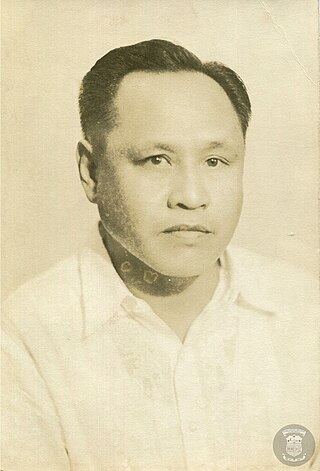
Ahmad Domocao "Domie" Alangadi Alonto was a Muslim-Filipino lawyer, educator, author, traditional leader, and Islamic figure from Lanao del Sur.


